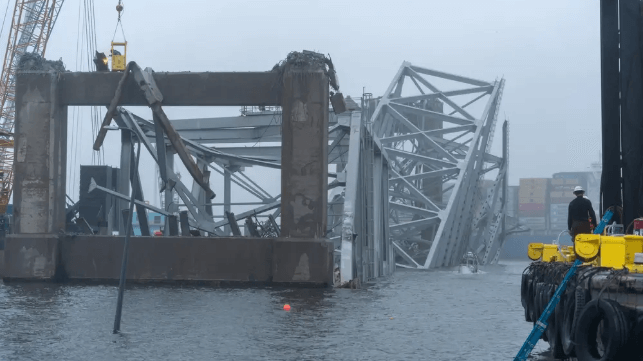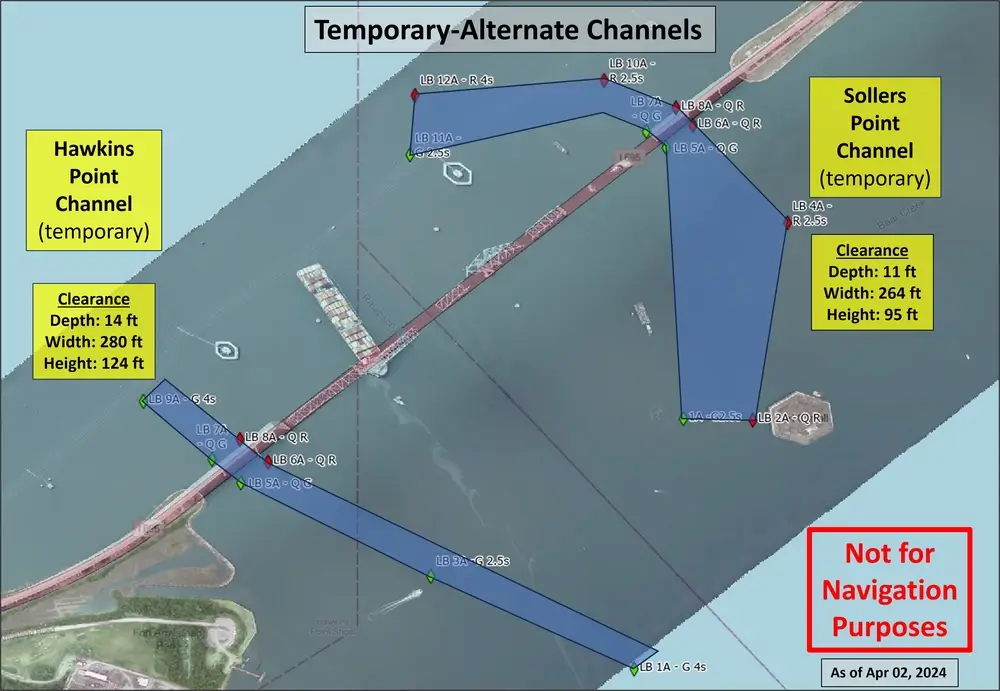USACE Wants to Open a Deep-Draft Channel to Baltimore by End of April
The "limited access channel" would have enough water depth for ro/ros

After a week of careful analysis and surveying, the U.S. Army Corps of Engineers (USACE) has determined a working timeline for reopening a channel for merchant ships in and out of the port's inner harbor. Response officials have been careful not to predict how long the reopening might take, given the exceptional complexity of the work and the need to make a thorough assessment of the wreckage, but USACE now believes that it will be possible to clear a channel for ro/ro traffic by the end of April.
The plan calls for clearing out a 35-foot by 280-foot channel through the wreckage of the Key Bridge within four weeks. This "limited access channel" is still short of the ultimate goal - reopening the 50-foot deep draft shipping channel used by boxships - but it would be big enough to support ro/ro and container-on-barge traffic, one vessel at a time.
Up until the collapse of the bridge, Baltimore was the busiest ro/ro port in the country; while some of that traffic has been diverted to the Tradepoint Atlantic terminal, located just on the seaward side of the bridge, other ro/ro cargo will have to be offloaded at other East Coast ports. This adds cost and complexity for shipments of cars, farm equipment and construction machinery, and it also reduces port activity - and the longshore wages that go along with it.
“These are ambitious timelines that may still be impacted by significant adverse weather conditions or changes in the complexity of the wreckage,” said Lt. Gen. Scott A. Spellmon, USACE commanding general. “We are working quickly and safely to clear the channel and restore full service at this port that is so vital to the nation."
 Temporary channels past the Key Bridge (Courtesy USCG)
Temporary channels past the Key Bridge (Courtesy USCG)
To date, the unified command and contracted salvors have opened up a channel to the north of the main span and a channel to the south. These temporary access lanes are 11 and 14 feet deep (respectively), which is enough for shallow barges and towboats but far from adequate for oceangoing vessels.

that matters most
Get the latest maritime news delivered to your inbox daily.
The complexity of the effort to open the main channel should not be underestimated, officials have repeatedly cautioned. Divers have to work in near-zero visibility on the bottom to survey the wreckage, and a tangled mat of girders from the central span has "pancaked" into the mud. Cutting this wreckage may be impossible to do safely, so the unified command is bringing in a grab bucket to pull it up piecemeal, a USACE official said Thursday.
Just released: In new video from one of the dive barges in the #FSKBridge response, we can see and hear the dive supervisor giving directional and work instructions to the diver due to very low visibility in the water (who is reporting back inspection results) — 1/3 pic.twitter.com/ljVTAB0t6F
— USACE Baltimore (@USACEBaltimore) April 3, 2024
